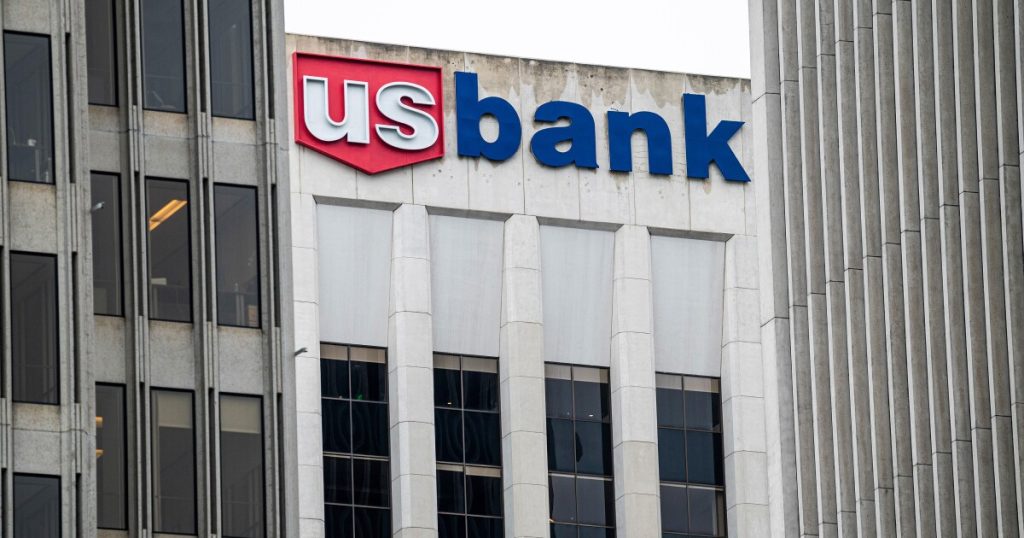- Bottom line: A double-digit spike in fee revenue at U.S. Bancorp pushed third-quarter net income to $2.0 billion.
- Expert quote: “We’re feeling very good about the momentum organically over time, and certainly see very real opportunity and quite a lot of runway,” said CEO Gunjan Kedia.
- Key insight: Return on tangible common equity totaled 18.6% for the quarter, in line with the goal the bank established at its 2024 investor day.
This article was updated with comments from an interview and a conference call with analysts.
U.S. Bancorp reported a 17% year-over-year increase in net income Thursday as fee income spiked, loans grew and credit quality held steady.
CEO Gunjan Kedia said that with the Minneapolis-based company’s businesses performing nicely, U.S. Bancorp will continue to focus on organic growth, even as regional bank mergers are heating up.
“We’re feeling very good about the momentum organically over time, and certainly see very real opportunity and quite a lot of runway,” Kedia said on a conference call with analysts. “Our focus is very much on organic growth.”
Third-quarter revenue of $7.3 billion was 7% higher than in the same period last year, driven in large part by the significant boost in noninterest income. Fee revenue jumped 14% year over year to $3.1 billion. The advance was broad-based, with credit cards, merchant processing, trust and investment services and capital markets each delivering gains.
Mortgage banking revenue was up 16%, hitting $180 million. Capital markets income jumped 9% to $434 million. The strength in the capital markets business matched a trend seen in the third quarter at other big banks, according to RBC Capital Markets analyst Gerard Cassidy.
“The near-term outlook for investment banking activity has started to improve relative to earlier in the year when the Trump Administration announced its tariff policies in April,” Cassidy wrote Wednesday in a research note.
Third-quarter noninterest expenses of $4.2 billion matched the Sept. 30, 2024, number.
Credit quality improved, with both net charge-offs and nonperforming loans declining from third-quarter 2024 levels. Charge-offs dropped 5% to $536 million. Nonperforming loans fell 10% to $1.65 billion.
The improvements reflect a resilient economy, U.S. Bancorp Chief Financial Officer John Stern told American Banker.
“We’re very pleased with how credit is shaping up,” Stern said. “Despite headlines you see about macro uncertainty, the facts are when we look at our book, the economy is quite resilient, spending continues to be strong on the consumer side, commercial balance sheets continue to be favorable, and they’re managing through the tariff environment we’re in.”
“We’re always looking for potential things that may lurk but we aren’t seeing that right now,” Stern added.
The improved credit quality metrics at U.S. Bank’s $695 billion-asset parent company were in line with the third-quarter results at other regional and money center banks. Both
Scott Siefers, who covers U.S. Bancorp for Piper Sandler, characterized the bank’s third-quarter report, which included net income of $2.0 billion, as a solid all-around effort.
“The net interest margin advanced more than we expected, net interest income outperformed, fees were well above our forecast, expenses were on top of expectations, and no credit issues,” Siefers wrote Thursday in a research note.
Investors reacted positively, with shares trading up 2% Thursday morning at $47.39.
The increased earnings came on the heels of last week’s news that Anchorage Digital Bank has tabbed U.S. Bancorp
“Digital assets are rapidly evolving, and U.S. Bank is well-positioned as they grow and become more common across financial services,” Chief Digital Officer Dominic Venturo said in a press release.
“The business model is clear, and it’s very favorable to us,” Kedia said Thursday on the conference call.
U.S. Bancorp’s third-quarter net income amounted to $1.22 per share, beating analysts’ estimate of $1.11, according to Zacks Investment Research.
The company’s broader results hit the medium-term targets it announced at its investor day event in September 2024. Its 1.17% return on assets was slightly higher than the 1.15% target, while its 18.6% return on tangible common equity jibed with guidance calling for an outcome in the high teens.
Stern said the company had initially figured it would take about two years to hit the investor-day targets. “We’re pleased to be at these levels in the third quarter of 2025, but we’re not satisfied,” he said. “We believe we have room to grow and we want to make sure we’re consistent about it.”
During the third quarter, U.S. Bancorp’s loans totaled $382.5 billion, up 2.2% from the same period a year earlier. The loan growth was higher than expected, according to RBC’s Cassidy. It drove a nine-basis-point linked-quarter increase in the net interest margin, which reached 2.75% for the three months ending Sept. 30.
U.S. Bancorp is forecasting fourth-quarter numbers largely in line with the third quarter. Its guidance calls for net interest income near $4.25 billion, along with fee income of approximately $3 billion.

